Until 1781, the known solar system consisted of six planets. On March 13 of that year, astronomer William Herschel observed a faint object in the constellation Gemini and noted that it moved slowly relative to the background stars. First thinking it a comet, Herschel later correctly identified it as a planet and wanted to name it after the monarch of his adopted United Kingdom. But astronomers decided to maintain the tradition of naming planets after mythological figures, and the seventh planet became known as Uranus. Because of its great distance from Earth, for two centuries, astronomers knew little about Uranus other than its five moons and the discovery in 1977 of rings around the planet. Voyager 2’s flyby in 1986 greatly increased our knowledge of this distant world.
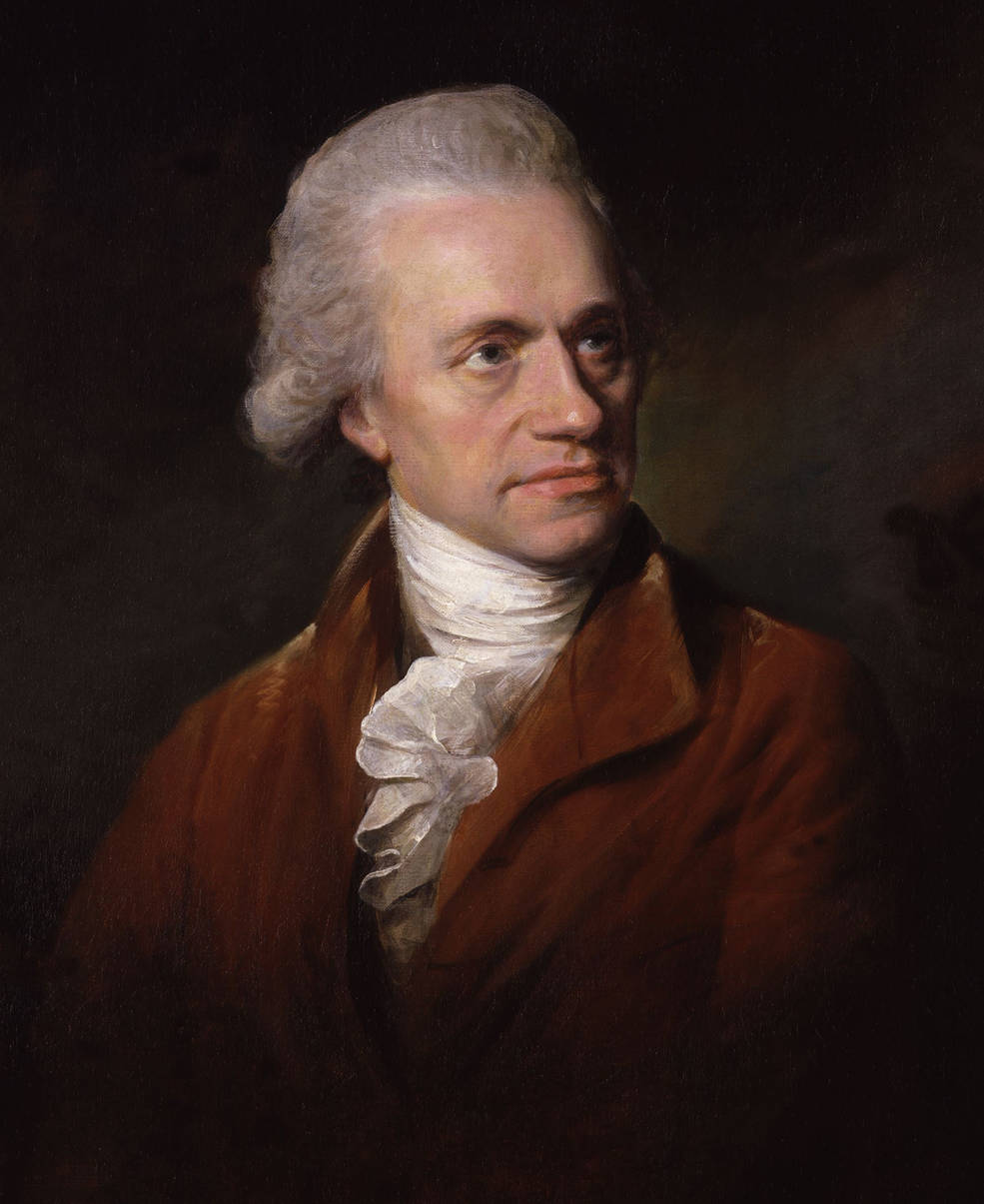
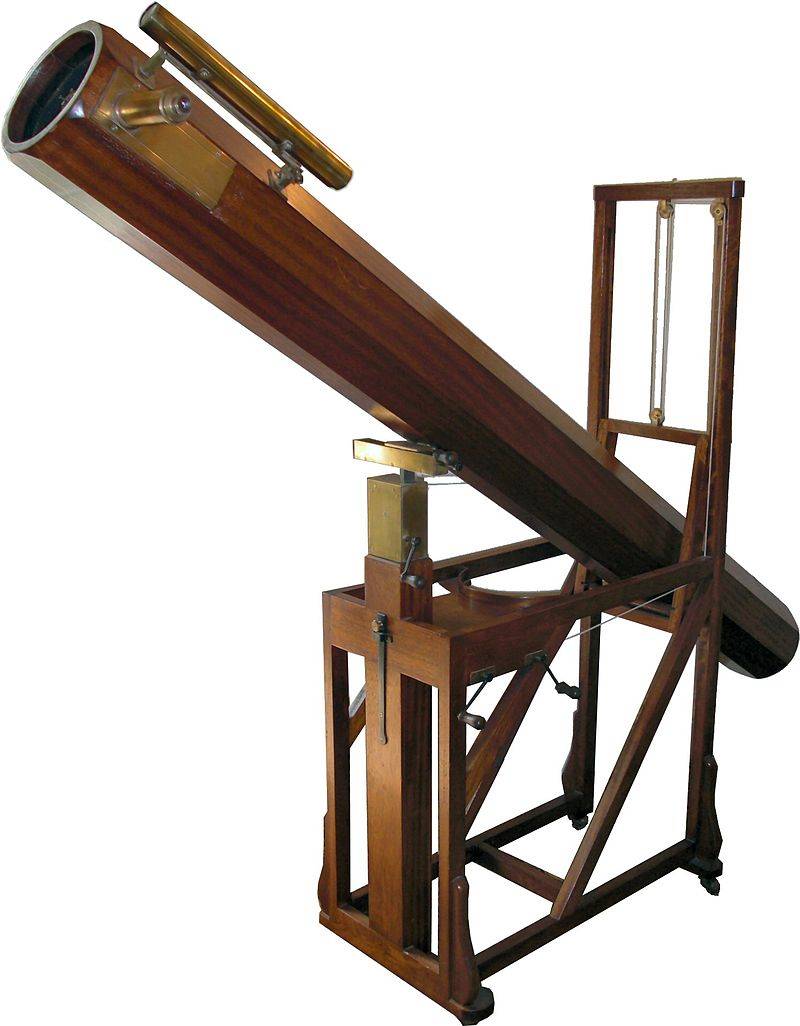
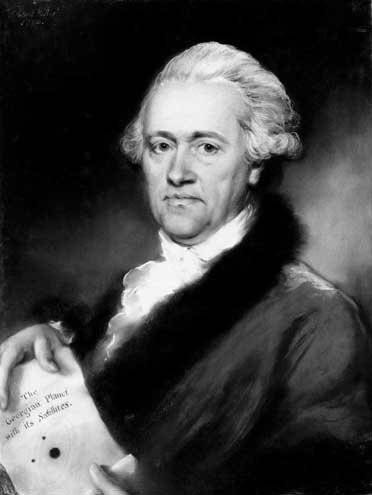
Left: Portrait (1785) of William Herschel by Lemuel Francis Abbott.
Image credit: National Portrait Gallery, London. Middle: Replica of the telescope
Herschel used in his observations of Uranus. Image credit: Herschel Museum of
Astronomy, Bath, United Kingdom. Right: Engraving (date unknown) of Herschel by
Edward Scriven holding a depiction of the Georgian Planet.
Image credit: Smithsonian Library Image Gallery.
William Herschel, born Friedrich Wilhelm Herschel in Hanover in what is now Germany in 1738, moved to London in 1757 to find work as a musician. He developed a passion for astronomy and began making his own telescopes to aid his observations. On March 13, 1781, while surveying the night sky in the constellation Gemini, Herschel first noted a faint object that moved slowly against the background stars over several nights. Initially believing it to be a comet, he later correctly identified it as a distant planet. As its discoverer, Herschel had naming rights over the new planet, and in honor of King George III, he called it Georgium sidus, Latin for George’s Star. Herschel’s discovery earned him a membership in the Royal Society and its coveted Copley Medal in November 1781. Astronomers in other countries didn’t like the new planet named after the British monarch and suggested instead the name Uranus, in Greek mythology the father of Cronus (Saturn in Roman mythology) and grandfather of Zeus (Jupiter to the Romans). While following the pattern of naming planets after figures in classical mythology, Uranus remains unique in that it uses the Greek name rather than the Roman one. Herschel later discovered Uranus’ two largest moons, Titania and Oberon, in 1787. Astronomers discovered three more moons, Umbriel and Ariel in 1851, and Miranda in 1948.
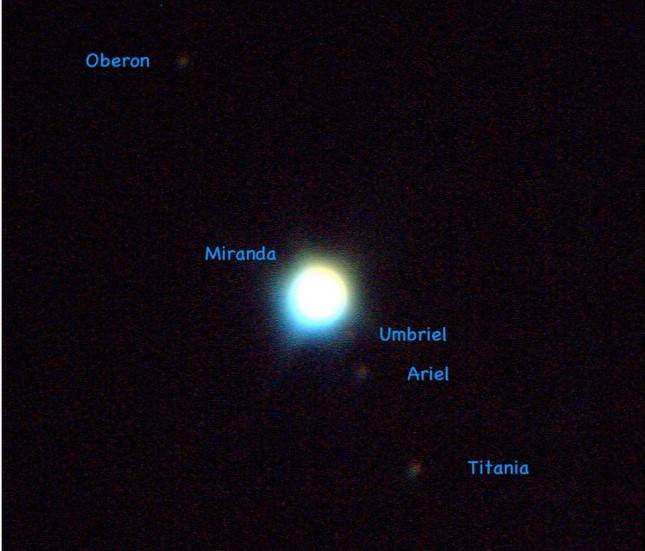
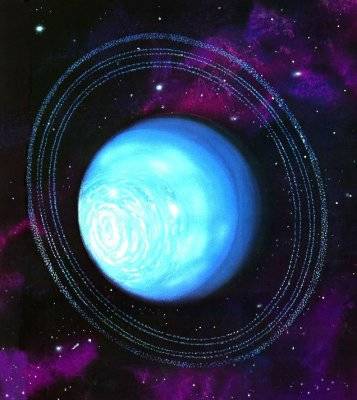
Left: Image of Uranus and its five largest moons taken with the 60-inch telescope at the Mt. Wilson Observatory. Image credit: Mt. Wilson Observatory. Right: Artist’s illustration of Uranus’ newly discovered rings in 1977.
Due to its remoteness, twice as distant from the Sun as Saturn, Uranus remained largely a mystery following its discovery. Astronomers calculated that Uranus took 84 years to complete one revolution around the Sun and that its axis of rotation is nearly perpendicular to its orbital path – the planet is basically lying on its side. It wasn’t until March 10, 1977, just six months before the Voyager spacecraft left Earth on their epic voyages of exploration of the outer planets, that astronomers discovered five faint rings orbiting Uranus. Using NASA’s Kuiper Airborne Observatory, they made the discovery as Uranus passed in front of a distant star, and the rings dimmed the star’s light as it passed behind them.
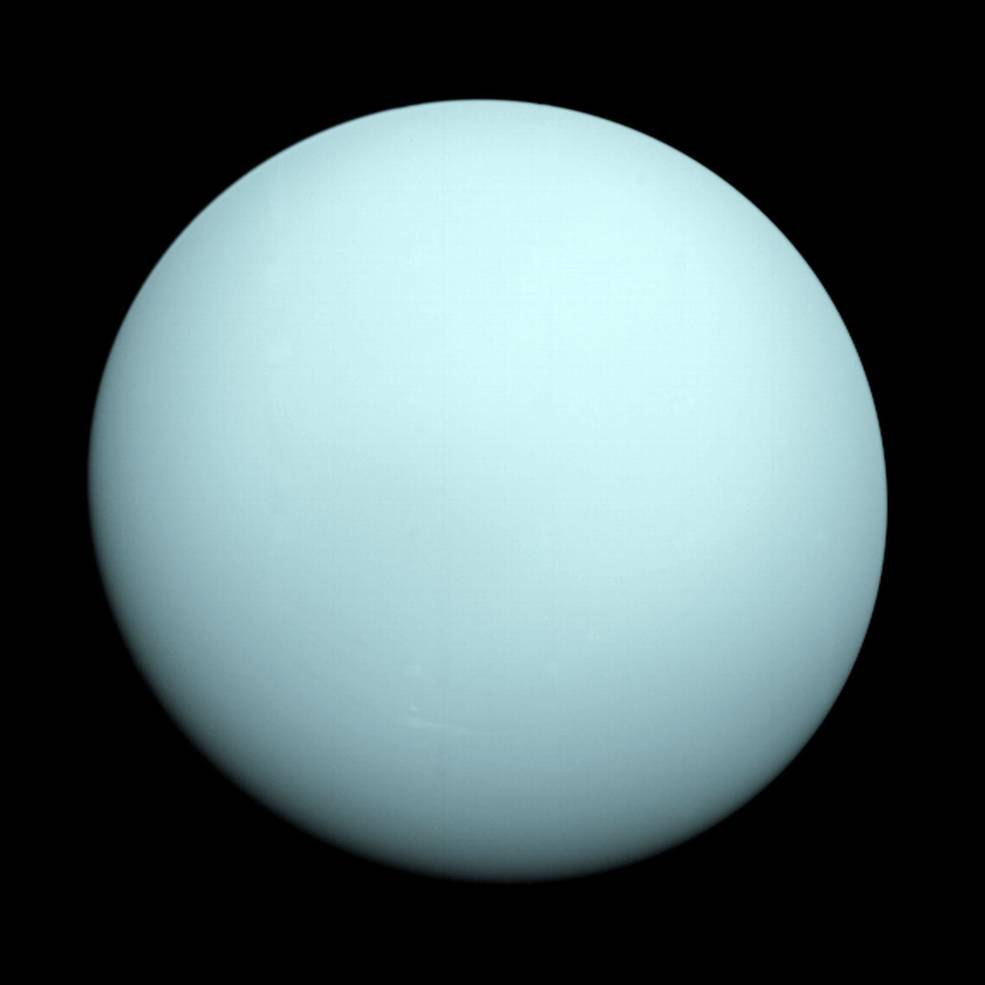
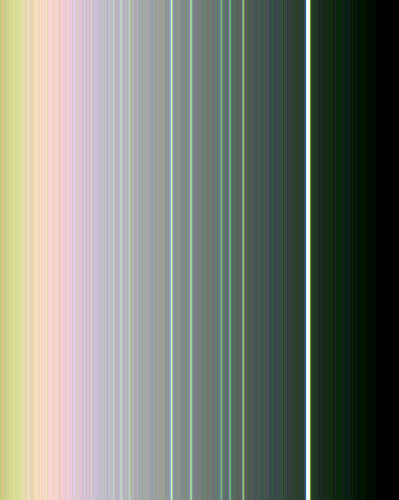
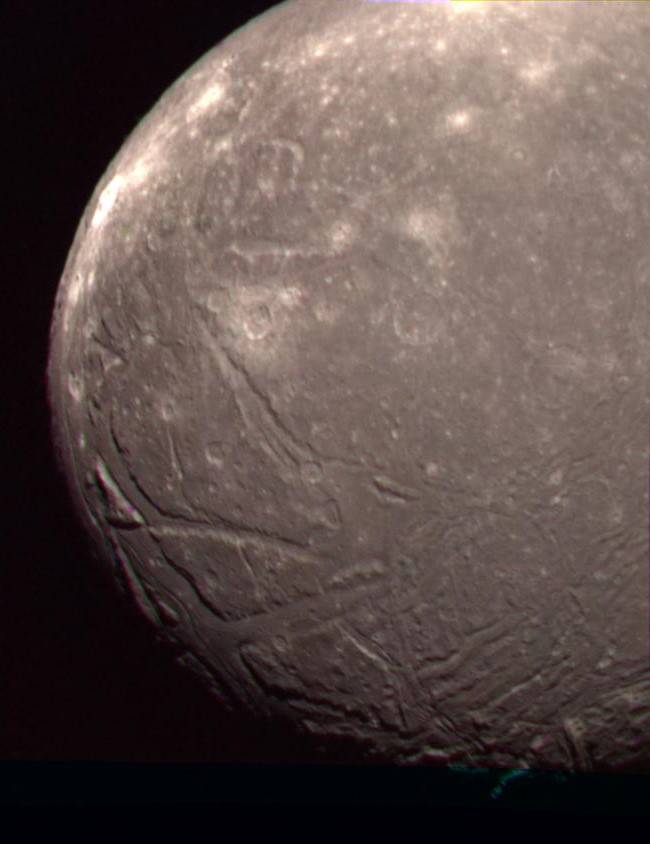
Left: Voyager 2 image of Uranus in natural color. Middle: False color Voyager 2 image of Uranus’ rings to bring out details, taken from 6 million miles away. Right: Voyager 2’s highest resolution color image of Uranus’ moon Ariel showing its complex surface.
On Jan. 24, 1986, the Voyager 2 spacecraft passed within 50,700 miles of Uranus’ cloud tops, the third of its four planetary encounters. During the four months it observed the planet, Voyager 2 revealed much about Uranus, its atmosphere, its unique moons, and its strangely tilted magnetic field. The spacecraft returned more than 7,000 photographs thousands of times more detailed than those taken by Earth-based telescopes. The images revealed 11 new moons and details about the planet’s complex ring system. No plans exist for future robotic exploration of Uranus, but fortunately, images of Uranus from the Hubble Space Telescope rival some of the Voyager photographs.
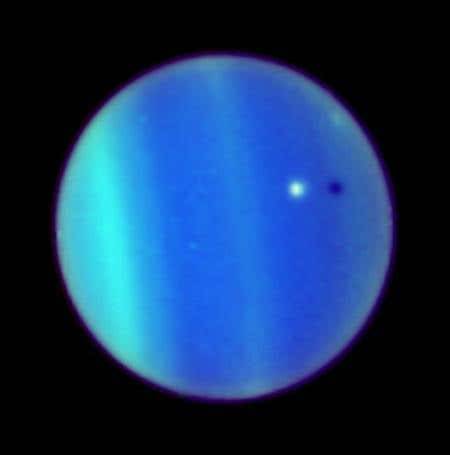
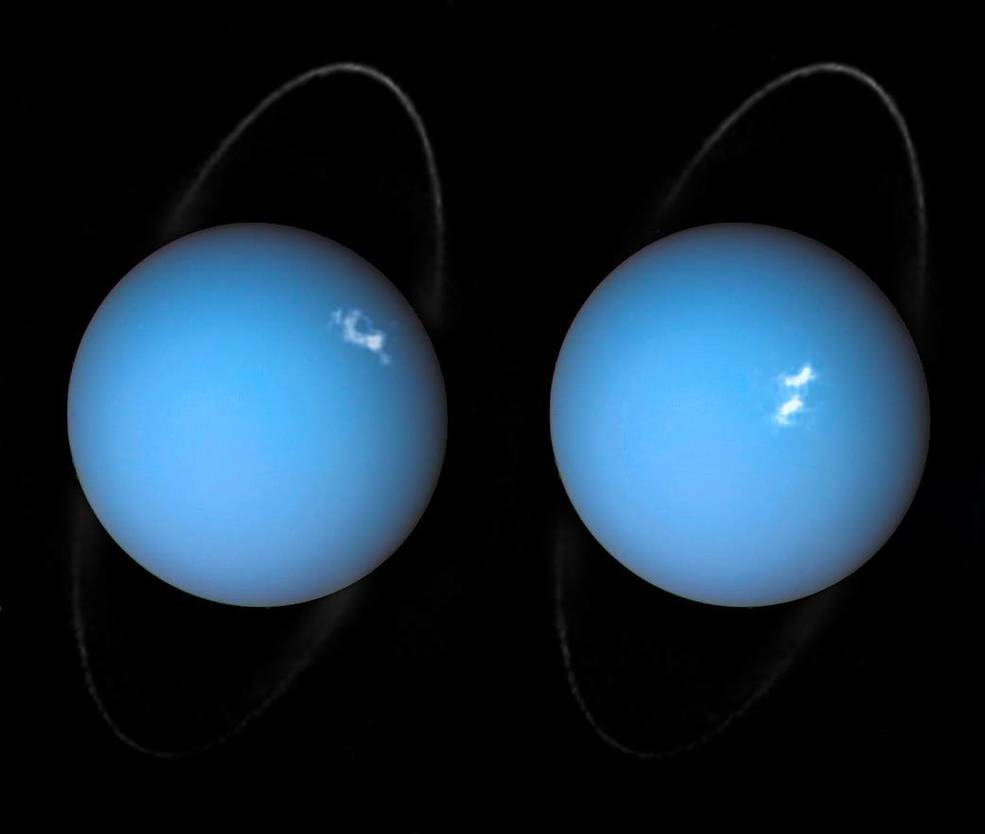
Left: The Hubble Space Telescope imaged the moon Ariel transiting across and casting a shadow on the face of Uranus in 2006. Right: Two Hubble Space Telescope images of Uranus from 2017 showing auroras in the planet’s upper atmosphere.
Events in world history in 1781:
January 29 – Mozart’s opera Idomeneo is first performed in Munich.
March 1 – The United States Continental Congress implements the Articles of Confederation.
April 6 – The rebellion led by Túpac Amaru II against Peru’s Spanish colonial government ends with Túpac’s capture.
September 4 – The city of Los Angeles is founded as El Pueblo de Nuestra Señora la Reina de Los Ángeles de Porciuncula (“City of Our Lady the Queen of the Angels of Porciuncula”), by a group of 44 Spanish settlers in California.
October 19 – Following the Siege of Yorktown, British General Charles Cornwallis surrenders to American General George Washington at Yorktown, Virginia, ending the armed struggle of the American Revolution.


























